Let’s talk knitting supplies for beginners. Which ones are the most useful?
One of the most fun parts of knitting is all the cool tools you get to play with. However, there are so many of them. Yikes. Don’t panic; you don’t need to run out and buy them all while you’re learning how to knit. In fact, you may never even need some of them.
Have no fear; this guide will keep you from going over the knitting supplies edge. There’s time enough to buy all the fun supplies, but first: the basics.
What Basic Knitting Supplies Do I Need to Start Knitting?
You don’t need a lot to get started knitting. Your basic knitting supplies are yarn, (of course!) needles, and a few other helpful accessories called “notions.”
One quick note: if you are a complete beginner, fresh out the gate, you don’t need anything more than the needles and yarn while you’re learning. I recommend getting down your knit and purl stitches and casting on and off down cold before you even attempt a pattern. I worry you’ll get frustrated if you try to jump into a pattern without knowing the basics. Learn each part of knitting step-by-step before you move on.
But hey, you do you! That’s just my two cents! I know how eager you are as a beginner to make your first project, but you’ll have more success if you take it slow. Fancy, expensive yarns aren’t your best practice materials.
Yarn For Beginners
Ah, yarn, sweet yarn. My favorite part of knitting. I feel like a kid in a candy store when I enter a yarn shop. You may find you feel similarly. This feeling is one of the many benefits of knitting, I think.
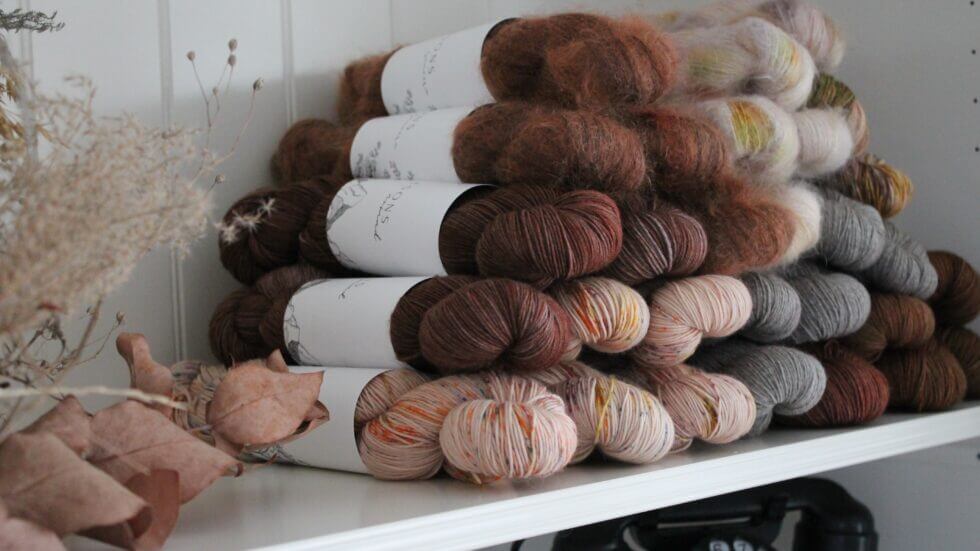
I understand how tempted you may be to buy the most beautiful, lush yarn when you’re starting out, but I don’t recommend it. That yarn is pricey, so save that money for when you really know how to handle it.
Don’t be too choosey in the beginning stages. You certainly want to work with a yarn you enjoy but remember that you’re only practicing right now. You’ll have plenty of time to use your dream yarns later. Soon, you’ll be desperate to find the best way to store yarn!
Yarn doesn’t only come in different colors but also different weights, fibers, and ply. So let’s look closer at that.
Best Type of Fiber for Beginner Knitters
You can buy yarn in a variety of fibers, and you’ll soon find you have your preferences. There are a huge variety of natural fiber yarns, synthetics, and practically unlimited blends of different natural and synthetics.
My personal favorites are natural fibers; I find they are the easiest to work with. However, they tend to be the most expensive yarns.
Synthetic fibers are more affordable and are absolutely worth consideration. They can be the best types of yarn to learn on. They can be cooperative to learn on, and if you mess up you aren’t out tons of money. The cheapest synthetics, like pure acrylic, might be challenging to work with; the strands can split and feel brittle in your hand. Yet, they’ve improved in recent years.
A blend of mostly synthetic with a small amount of natural fiber can work really well. You may not even notice the difference from pure, natural yarn.
It all comes down to personal choice; don’t shy away from experimentation. Where should you start? Feel the yarns before you decide; pick the one that feels good to touch. Just remember, don’t immediately go in for an expensive yarn.
Best Yarn Weight for Beginner Knitters
Yarn comes in eight standard weights, describing how thick the strand is. The weight of your yarn will dictate what size needle you’ll need to use. The label on the yarn will tell you what size needles are best.
The best yarn weights to learn on are worsted or chunky yarn. These are heavier yarns; the stitches are larger, so spotting your mistakes is easier.
Check out this super awesome guide to yarn weights from The Spruce.
Knitting Needles Are Basic Knitting Supplies
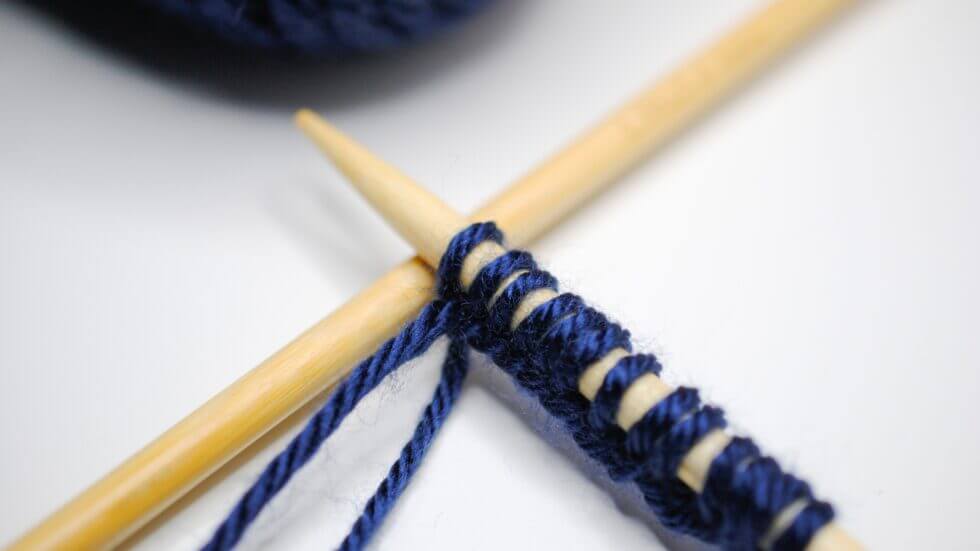
You won’t get very far without knitting needles! They are the second most essential knitting supply.
You’ll notice there are so many sizes, styles, materials, and lengths to choose from for your knitting needles.
Don’t focus on the scary circular or double-pointed needles just now. You will only need straight needles when first learning how to knit. We’ll discuss the different knitting needle styles in a later article but read on for material and size details.
Ultimately, your project and yarn will determine which knitting needle you’ll need to use. Of course, this will change from project to project.
You don’t need to spend a fortune on needles right now, either. (Believe me, you could!) But, on the other hand, make sure your starter needles aren’t super cheap and flimsy.
Best Knitting Needle Materials for Beginners
The most popular knitting needles are aluminum, plastic, or bamboo. Each one has its pros and cons.
Aluminum knitting needles feel incredibly sturdy but may also be a little slippery. It can be terrifying as a beginner when your stitch slips right off your needle! Plastic knitting needles aren’t rigid like aluminum but more flexible. Neither is necessarily better; it’s mostly a personal preference.
My favorite type of knitting needles are bamboo; I also think these are the best beginner knitting needles. They feel so good in your hand and are gorgeous. I always feel a little fancy using my bamboo knitting needles. And as a bonus, they aren’t slippery.
I highly recommend one pair of each type of knitting needle in your kit of basic knitting supplies.
Best Knitting Needle Sizes for Beginners
Yes, size does matter. (In this case, at least.)
The size of your knitting needle is more important than the material. The material is a personal choice, but the size isn’t negotiable. The thickness of your knitting needle directly correlates to your yarn’s weight. Remember, your yarn’s label will guide you, so don’t worry about feeling lost.
However, you will want a larger size for learning your basic stitches. I suggest a size US 8 or 10 knitting needle when learning. These are large enough to allow you to see your stitch well without being overwhelming or hard to hold.
I find that when I’m given a choice, I gravitate to size US 8. But that’s just me; you’ll also have a favorite needle size.
Avoid extra long needles for your first efforts. They are more clumsy to work with, and you don’t need that extra space while you’re learning.
Knitting Bag
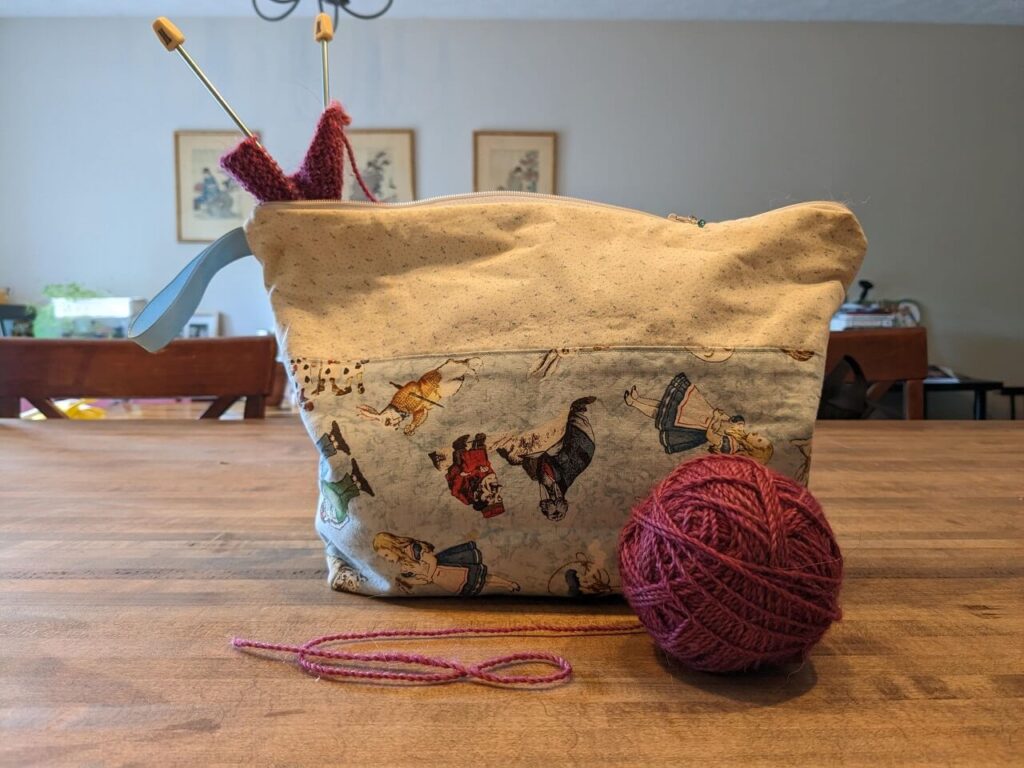
A knitting bag is maybe not essential, but it sure can be handy. You’ll want one spot to store all your basic knitting supplies, and portability is very convenient.
You can use any sort of tote bag that you may have lying around at first. However, as you progress in your new hobby and collect more knitting tools, you may want a specialized bag. A bag with compartments and pockets is extra helpful in keeping you organized.
Nearly anything will work but stay far away from any bags that use velcro. It will attract your yarn like a magnet and cause you all sorts of headaches.
Knitting Notions
Knitting notions are the tools and gadgets that make up your basic knitting supplies. As I said above, there are so many accessories. Many are essential; others only make your life slightly easier. Learning what each does may help you pick up your knitting definitions more quickly, too.
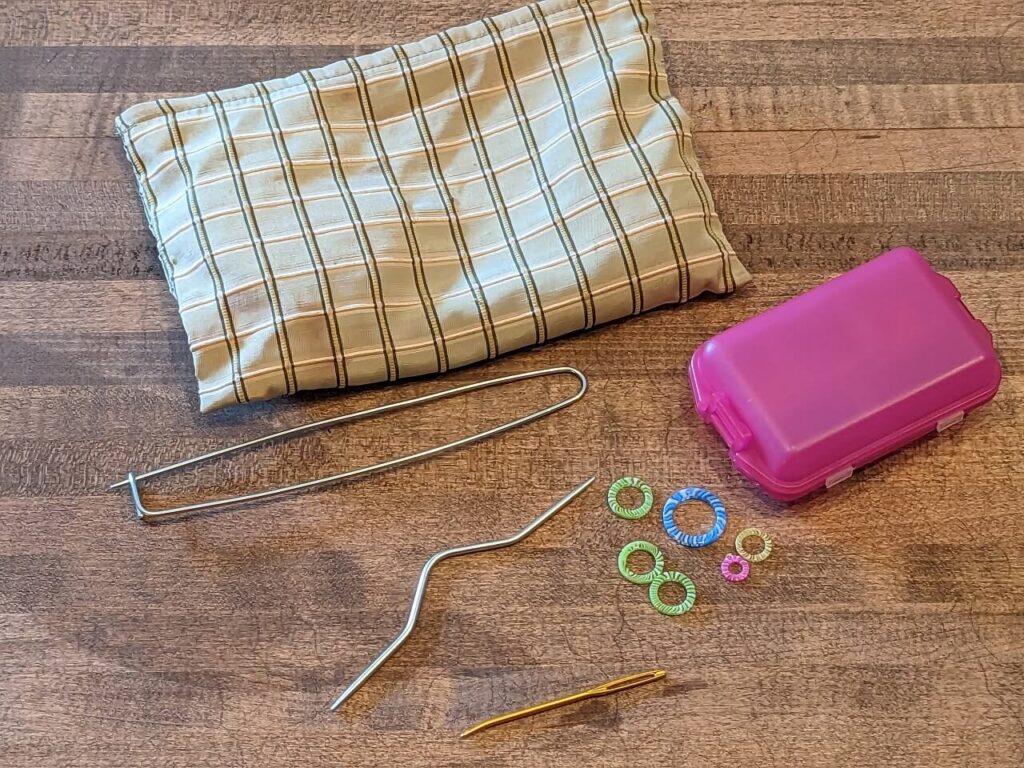
Let’s talk about the ones that are most helpful when you are getting started. These are the most essential goodies for beginners, but you’ll build out your notions collection the more you knit.
Pro tip: when you start a new pattern, you’ll want to look at it ahead of time to determine what notions you need. You might need to purchase a new tool, like a stitch holder or a cable needle.
Scissors

As you’re building your knitting bag, it’s helpful to keep a pair of scissors in there. Of course, you can use any household scissors, but you’ll want a pair that you can designate solely to keep in your knitting bag. That way, you won’t misplace them.
Tapestry Needle

A tapestry needle looks like a sewing needle on steroids. The difference is that it isn’t sharp and may be metal or plastic. Thankfully, the eye is super easy to thread since it’s large enough to insert your yarn.
You’ll use your tapestry needle a lot in knitting. It’s helpful for weaving in the ends of your yarn when you’ve finished a project and joining two pieces of knitted material together when making something like a sweater.
Tape Measure

A tape measure is another essential component for any knitting bag. You’ll often need to know once your project has reached a certain length. You might also need to measure yourself for a particular pattern if you are knitting up a sweet treat for yourself.
Needle Protectors
Needle protectors are a lifesaver when you travel with your knitting project. These small rubber tips cap the ends of your knitting needles and prevent your stitches from sliding off as you transport your work. Unfortunately, I’ve ruined a few too many projects by forgetting my needle protectors and losing half my stitches!
Knit Gauge
This handy little tool is one of the most useful knitting tools for beginners and experts alike.
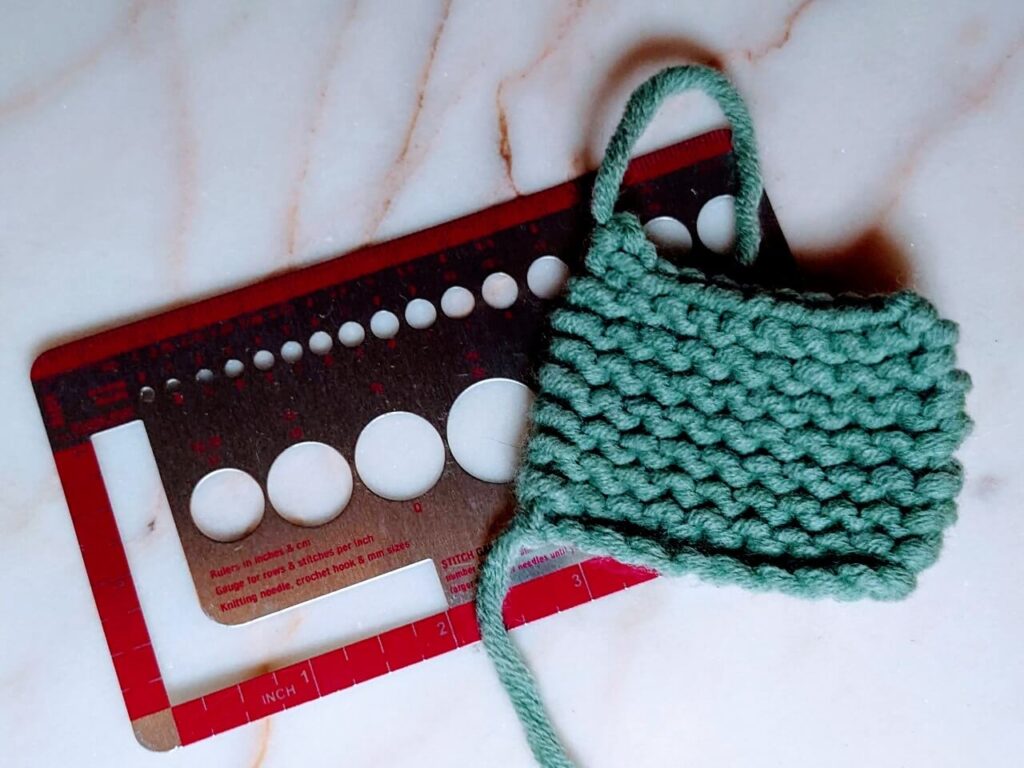
When you are following a knitting pattern, it will tell you at the beginning what your gauge should be. This means how many stitches and rows are in an inch. If your gauge isn’t correct, your knitted piece won’t fit properly. You will use this tool to measure blocks of your knitting to ensure your gauge is accurate.
Most knitting gauges also have holes in them to measure the size of your needles, too. This is another valuable item, especially if your needles aren’t marked with their sizes on them.
Best Places to Buy Knitting Supplies
Fortunately, you can grab most of these supplies from several places; they aren’t difficult to find.
My first suggestion is to check if you have a local yarn shop. Supporting local businesses is vital for your community, and you can’t beat the service you’ll receive there. They’re always eager to share knitting tips with customers!
The staff of local yarn stores are passionate about yarn and are an ideal reference when you have questions. For example, I’ve relied on my local shop for help choosing the perfect yarn for some patterns or to help get me unstuck when I’ve goofed up a project.
You can’t get in-person help like this in many other places. Plus, it’s the perfect opportunity to meet other knitters. And, feeling all that yarn is the best way to choose which one you want to work with next!
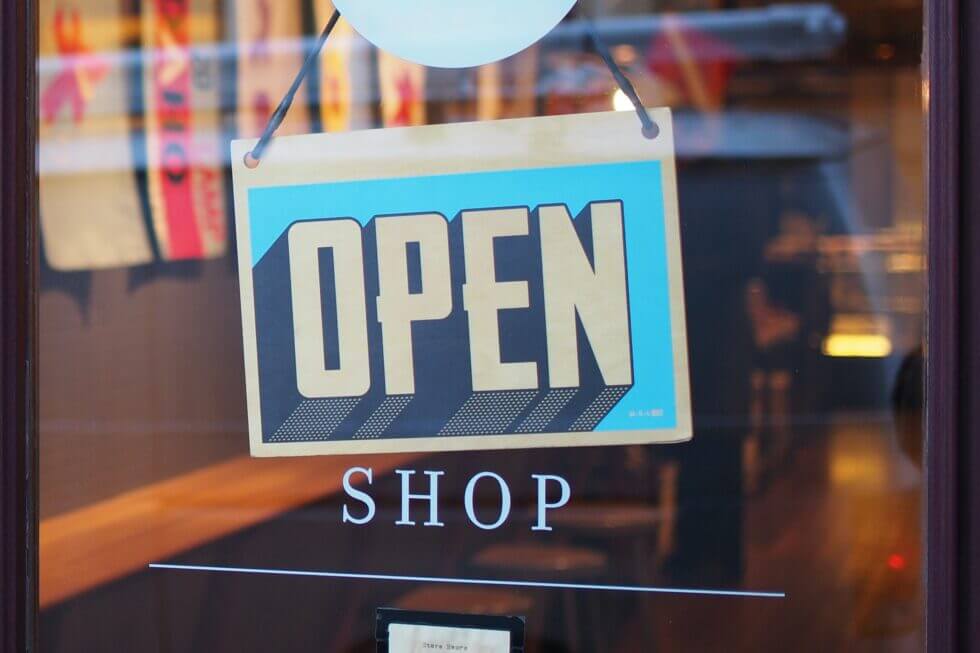
If your town doesn’t have a local yarn shop, your next bet is one of those large craft stores like Michael’s or Jo-Ann Fabric. Those stores are easy to get to and are often very affordable. The biggest con is that you don’t get personal help there. You also aren’t likely to find unique yarns or notions, either.
By far, the easiest way to buy knitting supplies for beginners is through online stores. There’s no denying that the convenience is terrific, but it isn’t as fun as being able to pick things out in person. And you’ll definitely get no help with picking out the best product for your project!
Or maybe you don’t need to buy any basic knitting supplies! If you are lucky, you might have a family member who is a knitter and would be willing to loan you some extra supplies to get you started on your new journey. Can’t beat the price!
Looking to pick up another hobby? Check out my Complete Guide to Learn to Sew!
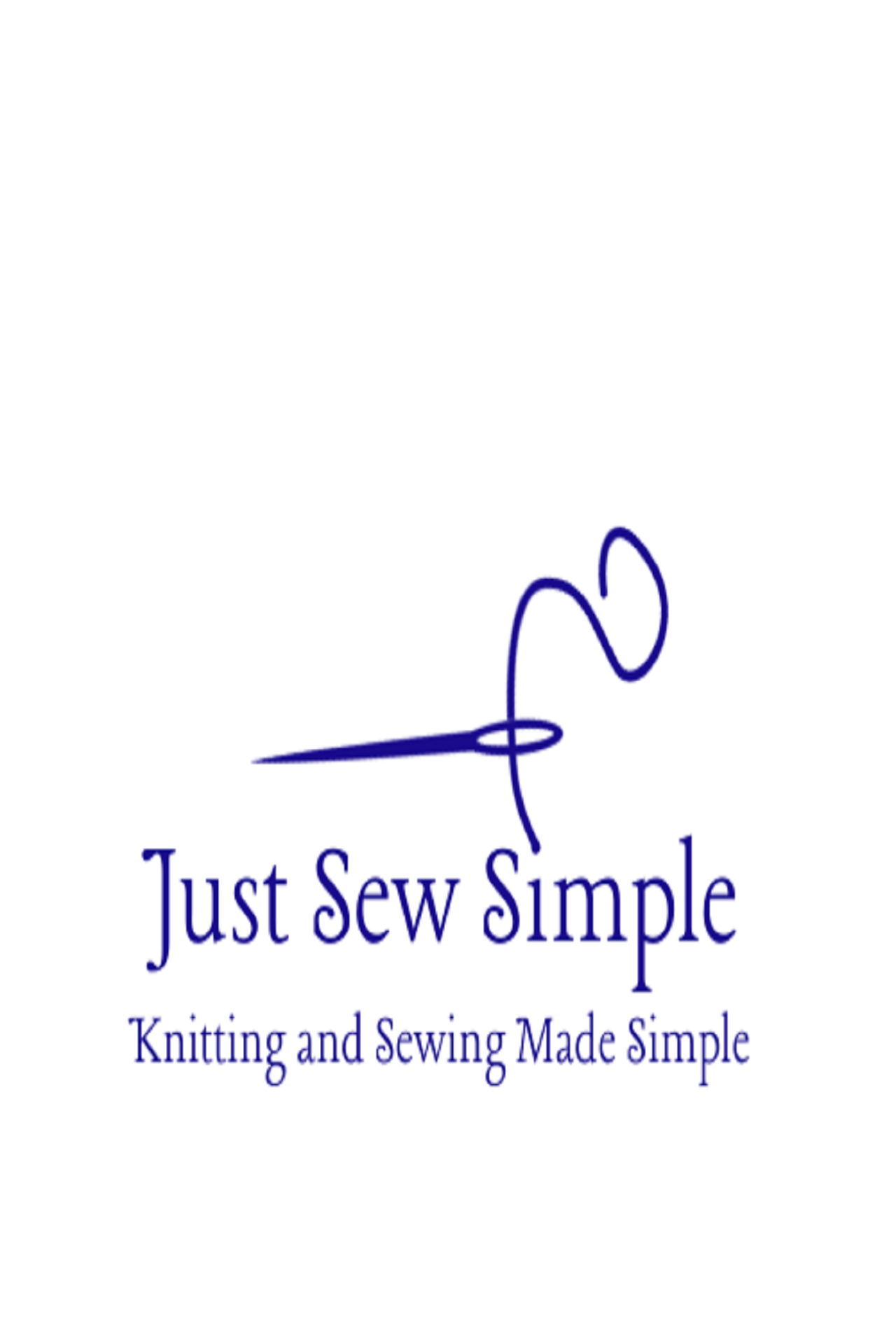
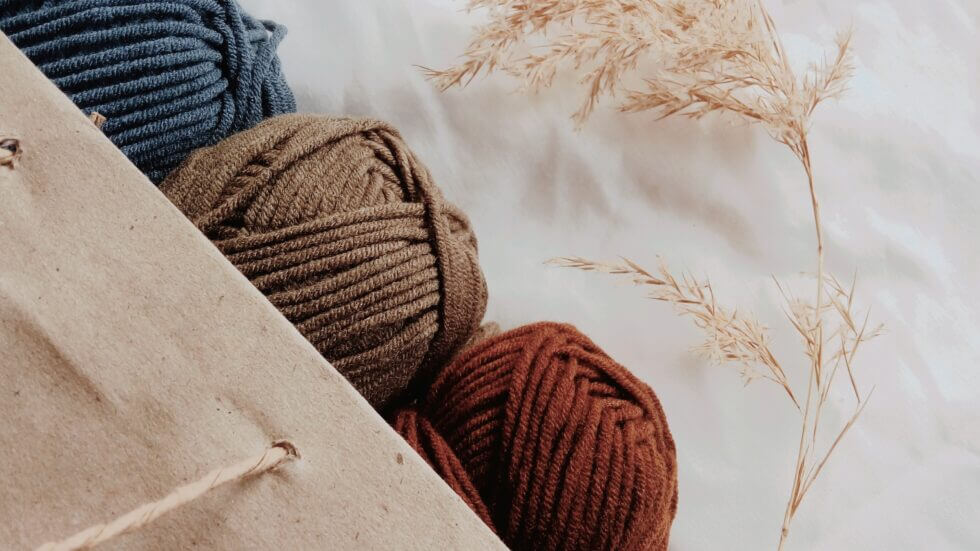
What a handy list! Especially the tapestry needle. I always seem to misplace mine! I learned to knit in Germany, and am a fan of circular needles.